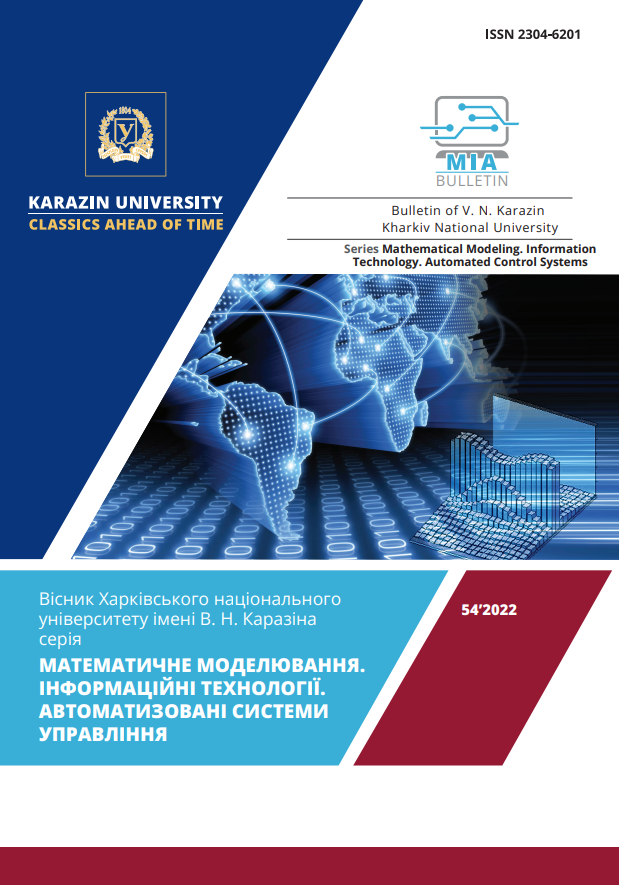Research of using the artificial intelligence algorithms in intrusion detection/prevention systems
Abstract
The analysis of the necessity and expediency of using artificial intelligence algorithms and technologies based on neural networks and fuzzy logic in systems for detecting and preventing network intrusions has been carried out. Modern network attacks are distinguished by the ability to change their characteristics and modes of action almost in real time. Outdated expert network protection systems based on the concept of "rule-action" can no longer cope with these types of attacks, because they need a certain time to process information about a new attack and store it into their database. The paper proposes a model of an intrusion detection/prevention system based on the use of a neural network trained on a test sample created by using fuzzy logic algorithms. The learning algorithm of the neural network is based on the method of learning with a teacher and the method of backpropagation of the error. Thus, for the complete neural network training procedure the user only needs to have a dump of the intercepted network traffic for further processing according to the test sample creation algorithm. The results of evaluation and practical testing of the proposed model show that such a network protection scheme can work quite reliably and can be used as an intrusion detection/prevention system for local and global networks.
Downloads
References
/References
Ganesh Kumar P., Devaraj D. Intrusion detection using artificial neural network with reduced input features. URL: http://ictactjournals.in/paper/IJSC_V1_I1_PAPER_5_30_36.pdf. Coimbatore, 2010. 36 p.
Kumar G., Kumar K., Sachdeva M. The use of artificial intelligence-based techniques for intrusion detection. Punjab: Springer Science + Business, 2010. 387 p.
Gupta B., Singh B., Jain V. Artificial Intrusion Detection Techniques. URL: https://arxiv.org/ftp/arxiv/papers/1701/1701.02145.pdf. New Delhi, 2014. 43 p.
Sikos L. F. AI in Cybersecurity. New York: Springer, 2018. 205 p.
Documentation from official page of «Wireshark»: web site. URL: https://www.wireshark.org/docs/.
Tyugu E. Artificial Intelligence in Cyber Defense. Tallin, 2011. 105 p. URL: https://www.ccdcoe.org/uploads/2018/10/ArtificialIntelligenceInCyberDefense-Tyugu.pdf.
Sarathi Bhattacharjee P., Ara Begum S. Fuzzy Approach for Intrusion Detection System. Agartala: International Journal of Research Studies in Computer Science and Engineering (IJRSCSE), 2013. 108 p.
Shahriar Usman Khan, Fariha Eusufzai, Md. Azharuddin Redwan, Mohiuddin Ahmed, Saifur Rahman Sabuj. Artificial Intelligence for Cyber Security: Performance Analysis of Network Intrusion Detection. Cham: Springer, 2022. 140 p.
Ганеш К., Девараж Д. Виявлення вторгнень за допомогою штучної нейронної мережі зі зменшеними вхідними можливостями. URL: http://ictactjournals.in/paper/IJSC_V1_I1_PAPER_5_30_36.pdf. Коїмбатор, 2010. 36 с.
Кумар Г., Кумар К., Сачдева М. Використання методів на основі штучного інтелекту для виявлення вторгнень. Пенджаб: Springer Science + Business, 2010. 387 с.
Гупта Б., Сінг Б., Джейн В. Виявлення вторгнення за дпомогою штучного інтелекту. URL: https://arxiv.org/ftp/arxiv/papers/1701/1701.02145.pdf. Нью Делі, 2014. 43 с.
Сікос Л. Ф. Штучний інтелект у кібербезпеці. Нью Йорк: Springer, 2018. 205 с.
Документація з офіційної сторінки «Wireshark»: веб сайт. URL: https://www.wireshark.org/docs/.
Тійгу Є. Штучний інтелект у кіберзахисті. Таллінн, 2011. 105 с. URL: https://www.ccdcoe.org/uploads/2018/10/ArtificialIntelligenceInCyberDefense-Tyugu.pdf.
Сараті Бхаттачарджі П., Ара Бегум С. Нечіткий підхід для системи виявлення вторгнень. Агаратала: Міжнародний журнал досліджень у галузі комп’ютерних наук та техніки (IJRSCSE), 2013. 108 с.
Шахріар Усман Хан, Фаріха Еусуфзай, Мад. Азхаруддін Редван, Мохіуддін Ахмед, Сайфур Рахман Сабудж. Штучний інтелект для кібербезпеки: аналіз продуктивності мережі по виявленню вторгнень. Кам: Springer, 2022. 140 с.




